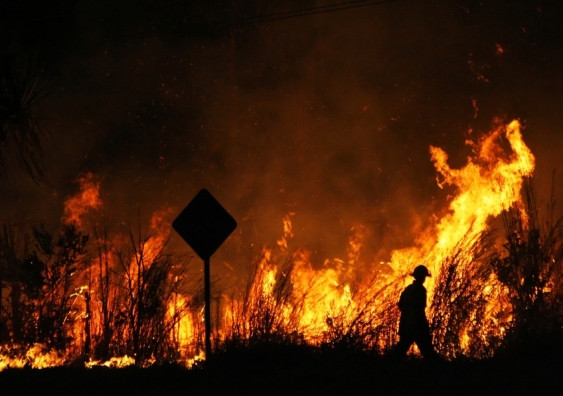Past Conformity: Enhancing Property Safety with a Thorough BAL Report Analysis
Past Conformity: Enhancing Property Safety with a Thorough BAL Report Analysis
Blog Article
Exactly How BAL Record Impacts Bush Fire Security Measures
In the world of bush fire security, the Structure Attack Degree (BAL) record stands as a vital tool that considerably influences the safety and resilience of homes in fire-prone locations - BAL Report. The impact of a BAL analysis prolongs much past plain paperwork; it acts as the foundation for figuring out the ideal construction standards and fire security actions necessary to alleviate the threats presented by bushfires. As communities face significantly extreme fire periods, understanding exactly how the BAL report shapes these safety steps ends up being paramount for policymakers, builders, and property owners alike
Comprehending the Bushfire Attack Degree

Relevance of BAL Report Evaluation

Furthermore, the BAL record assessment serves as a foundational action in adhering to lawful obligations and demands connected to bushfire security. Local councils and authorities often mandate the submission of a BAL report as part of the preparation and building authorization process to ensure that properties are adequately guarded against bushfire threats. Stopping working to perform a detailed BAL report analysis can cause inadequate security measures, leaving buildings susceptible to ruining bushfire cases.
Construction Criteria Based on BAL
A thorough understanding of the Bushfire Strike Degree (BAL) allows building owners to implement building requirements customized to their specific danger account. Building and construction standards based on BAL are vital in reducing the effect of bushfires on residential or commercial properties. The BAL ranking classifies the possible risk a residential or commercial property deals with during a bushfire on a range from BAL-Low to BAL-FZ (Fire Area)
Applying Fire Defense Measures
With the structure of construction criteria based on Bushfire Strike Level (BAL) in location, the focus now shifts in the direction of the functional implementation of fire security steps to fortify properties against bushfire threats. Easy procedures include utilizing fire-resistant structure products, installing ash guards on vents, securing gaps in roof coverings and wall surfaces, and preserving a clear room around the building cost-free from flammable vegetation. By incorporating both passive and energetic strategies, properties can substantially decrease their check here susceptability to bushfire occurrences and raise the safety of passengers.
Shielding Houses Versus Bushfires
Successfully securing homes versus the destructive effects of bushfires requires a positive and thorough approach to fire security measures. Home owners living in bushfire-prone locations need to prioritize the implementation of different methods to enhance their property's strength against wildfires. One fundamental element is creating a defensible space around the home by maintaining a you can try this out clear zone free of combustible products. This consists of frequently cutting plant life, removing dead plants, and making sure a risk-free range in between trees and structures. Mounting fire-resistant roof materials can also substantially lower the risk of coal attacks and direct flame call. In addition, sealing spaces and vents to avoid ash intrusion, as well as integrating fireproof doors and windows, can aid fortify the home's protection versus bushfires. Spending in a dependable water resource, such as a well-maintained sprinkler system or a committed water tank, is essential for supplying water throughout fire emergency situations - BAL Report. By embracing a proactive stance and incorporating these safety measures, property owners can dramatically boost their opportunities of protecting their homes versus bushfires.
Verdict
In final thought, the Bushfire Strike Level (BAL) record plays a critical role in determining the needed protection actions against bushfires. By assessing the BAL, building and construction requirements can be tailored to reduce the threats and guarantee the security of homes in fire-prone areas. Carrying out best site fire defense procedures based upon the BAL record is necessary in protecting buildings from prospective bushfire risks. It is vital for homeowners to prioritize BAL analyses and follow advised building standards to boost bushfire resilience.
In evaluating bushfire danger to residential or commercial properties, comprehending the Bushfire Assault Level (BAL) is an important part for applying reliable defense measures. Overall, a clear understanding of the Bushfire Assault Degree is essential for executing adequate security procedures and mitigating the effect of bushfires on residential or commercial properties.

Report this page